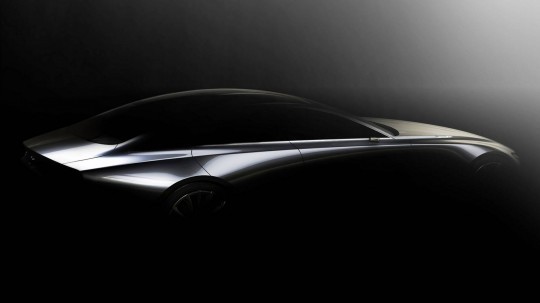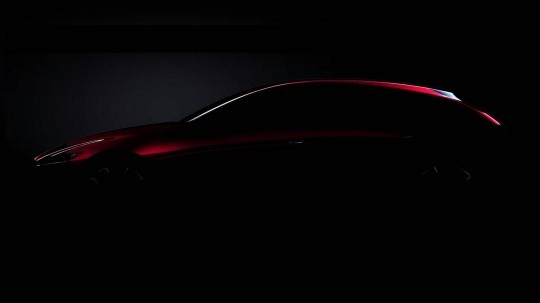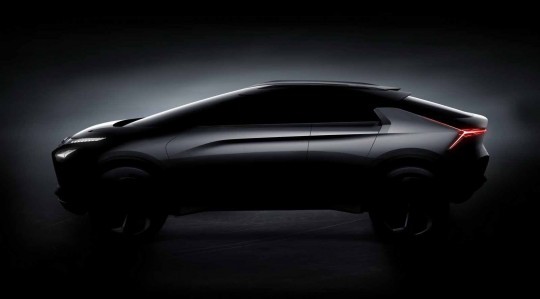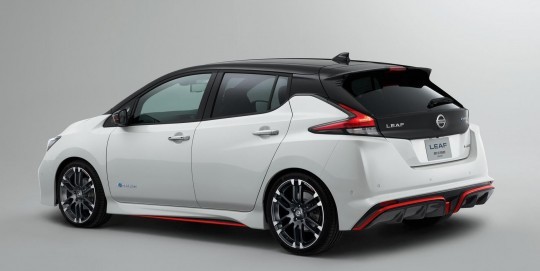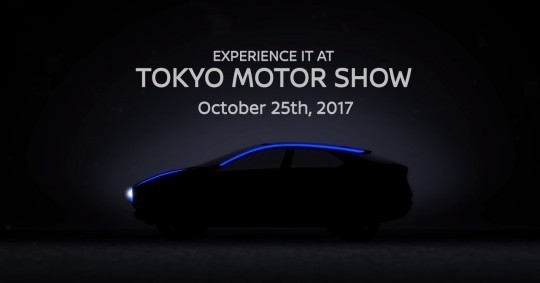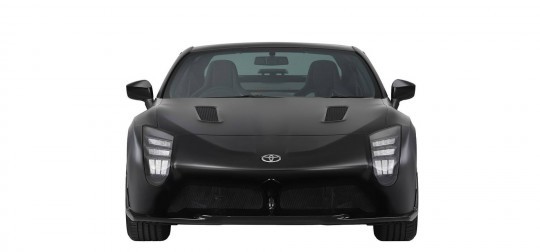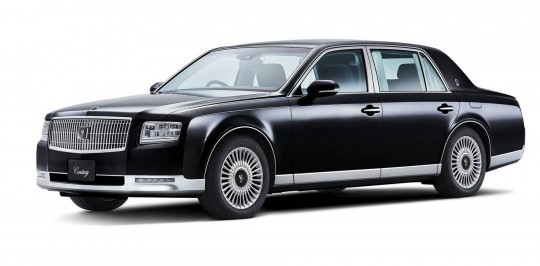


































Beyond these, the biennial show features wild tuning jobs and glimpses of one of the world’s most idiosyncratic car culture. A show that’s just as vibrant as Tokyo’s nightlife, the 45th Tokyo Motor Show also focuses on the latest of automotive technologies thanks to the addition of the Tokyo Connected Lab.
As we wait for the Tokyo Big Sight International Exhibition Center to open its doors on October 25, here is a preview of the most significant debuts in the view of autoevolution’s editorial team. In alphabetical order, the list looks as follows:
Honda Sports EV Concept
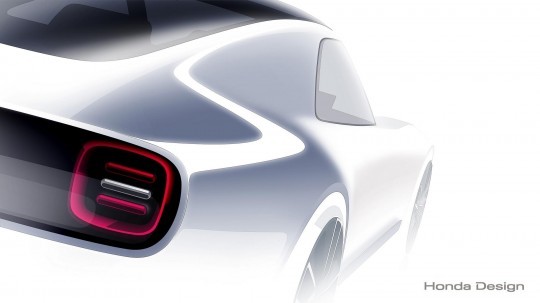
Teased by a design sketch showcasing the car’s right rear-quarter, the Sports EV Concept is a follow-up on the Urban EV Concept presented at the 2017 Frankfurt Motor Show. Honda didn’t mention a word about the prospect of an electric sports car for the masses, but there’s hope the implausible will happen.
Netizens suggest that Honda’s all-electric platform, which will underpin two EVs designed with Europe in mind, is modular enough for rear-wheel-drive applications. While Honda didn’t confirm the rumors, the automaker did mention the electrified architecture serves as the building block for a diverse range of EVs. By that, Honda suggests e-crossovers are also considered.
The push for electrification is no coincidence either. Only recently, Honda announced that its Electric Vehicle Development Division is hard at work, with Hitachi Automotive System helping the company deliver on its promise. Other than EVs, the newly established division is also developing an ultra-fast charging system that promises 150 miles of driving range for 15 minutes of charging. What’s more, wireless charging technology is developed in parallel.
2019 Lexus LS F
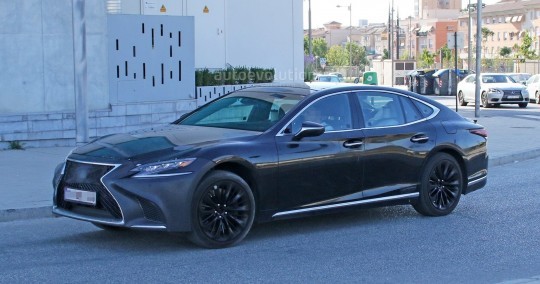
Although unconfirmed, the LS F is expected to take the stage in Tokyo and show the Mercedes-AMG S63 that it’s not alone in the performance full-size luxury sedan market. The carparazzi caught pre-production prototypes of the newcomer testing on public roads, and it’s obvious what’s in store from the F.
Better suspension, more aggressive styling, and a more driver-oriented interior are obvious changes over the LS F Sport, but the party piece hides under the hood. Believed to displace between 4.0 and 4.4 liters, the twin-turbo V8 is a new design for Lexus, aimed squarely at the Mercedes M177 and BMW S63.
With a projected output of 600 horsepower, the LS F is expected to have what it takes to handle its own against the German establishment. The second-most powerful LS available is the LS 500, which features 3.5 liters’ worth of twin-turbo V6, 415 horsepower (309 kW), and 440 pound-feet (600 Nm) of torque.
Mazda Design Vision Model
By Design Vision Model, Mazda actually refers to a concept that serves as a teaser for Kodo Design 2. It’s the biggest departure from the first generation of Kodo – Soul In Motion to date, the design language introduced by the CX-5.
The teaser photo depicts a four-door sedan with a long hood and a short deck, as well as muscular wheel arches that emphasize width. Instead of conventional mirrors, two cameras are attached to the A-pillars. This setup is no coincidence considering Japan approved mirrorless cars in August 2016. The United States, meanwhile,
could approve mirrorless cars as early as 2018.
What you see here, then, is Mazda’s design direction for the next-generation 6. Plenty of rumors surround the mid-size sedan, which some voices suggest it’ll go rear-wheel-drive thanks to a platform developed by Toyota. More curiously, the Toyota RWD platform could also underpin the RX-9 sports car.
Mazda Product Concept Model
Fusing “next-generation technology and design,” the Product Concept Model is Mazda’s way of saying “we’re almost ready to take the veils off the all-new 3.” You know, the hatchback that will be powered by the 2.0-liter SkyActiv-X.
Other than the fact it relies on the first commercially available gasoline engine to use compression ignition, the Product Concept is the first application of SkyActiv-Body Gen 2 and SkyActiv-Chassis Gen 2. The 2019 Mazda3, meanwhile, will be the first series-production vehicle to boast Kodo Design 2.
Mazda’s new Connect infotainment system is also confirmed to debut in 2019, as is a mild-hybrid powertrain. It’s not yet known is Mazda’s 2019 EV and 2019 range-extended plug-in hybrid vehicle will share any of their underpinnings with the Mazda3, but the chances are that’s what will happen.
Mitsubishi e-Evolution Concept
In 1992, Mitsubishi wowed the world by turning the Lancer into the Evolution I. But with the Evolution X Final Edition, the Lancer lost its mojo and Mitsubishi lost an icon. For how long, nobody knows for certain, but the e-Evolution Concept could turn things around if a production model gets the go-ahead.
Instead of four-door sedan with all-wheel-drive and a 2.0-liter turbocharged four-cylinder, the e-Evolution features an all-electric powertrain and presents itself as a coupe-ish SUV. It’s a totally different animal from the Evolution we all know and love, but Mitsubishi under Nissan’s control is serious about EVs.
No less than five all-new models will be launched within the next three years, and Mitsubishi will rely heavily on the alliance’s synergies to make ends meet. As confirmed by Renault, Nissan, and Mitsubishi in the Alliance 2022 business plan, no less than 12 electric vehicles are coming to market. Could the e-Evolution Concept be one of them, probably related to the Leaf-based SUV?
Nissan Leaf NISMO Concept
The second-generation Leaf may be underwhelming on paper and because of the torsion beam at the rear, but Nissan intends to make the all-electric hatchback more compelling for the driving enthusiast. Meet the Leaf NISMO Concept. And wouldn’t you know, it could go into production late next year.
Even the lowly Nissan Sentra is available in NISMO flavor, so it doesn’t come as a surprise the Leaf is joining the fray. More aggressive tires, revisions to the exterior design, sportier suspension settings, and software-based improvements to the FWD electric powertrain sum up what the Leaf NISMO has to its name.
Come 2019 model year, the Leaf will gain a variant called “e-Plus” with a bigger battery (60 kWh) and a longer range (reportedly more than 225 miles). The Leaf e-Plus is further confirmed to develop more than 147 horsepower and 236 pound-feet of torque, but pricing remains unknown for the time being.
Nissan Intelligent Mobility SUV Concept
What happens when you combine the powertrain of the Leaf with the practicality of a crossover? Well, the Intelligent Mobility SUV Concept happens. The name of the production model hasn’t been made public, but Nissan doesn’t want to rush things just to have the edge over the competition.
The yet-unnamed electric SUV is one of the 12 electric vehicles mentioned a few paragraphs ago, and its backbone won’t differ too much from the second-generation Leaf. The big question is, can Nissan make a case for a dual-motor drivetrain and a performance-oriented model in the vein of the Leaf NISMO?
Given time, all will be made clear by the Japanese automaker. And time is of the essence considering fossil fuels continue to rule supreme all across the world. With France and the UK set to ban the sale of gasoline- and diesel-fueled cars by 2040, battery-powered EVs will become the norm before long.
2018 Suzuki Jimny
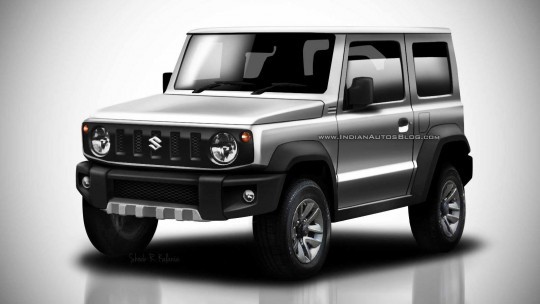
The Jimny is one of the oldest cars still in production. It’s an unbelievably archaic piece of personal transportation, an automotive antiquity that continues to sell well and strike a chord with off-road enthusiasts. The little mountain goat, however, is too old for its own good. But not much will change with the next-gen Suzuki Jimny, which will premiere at the 2017 Tokyo Motor Show.
Reassuringly square, high off the ground, and equipped with classically correct round headlights, the newcomer has all the makings of an icon. But in stark comparison to its predecessor, it’ll be more comfortable for everyday use. These updates, however, aren’t enough for Suzuki to return to the U.S. of A.
Europe is one of the most important markets for the all-new Jimny, which Suzuki expects to help crack the 300,000 mark in t
he next fiscal year. Value is another thing the Jimny has going for it, as is a wider selection of engines compared to the current-gen model. From a 0.66-liter three-cylinder to a 1.4-liter four-cylinder, there’s an engine for every type of Jimny buyer out there.
Toyota GR HV Concept
The GR HV Concept isn’t your average GT 86 with a sleeker body shell. It’s the first Toyota with a targa top in eons, and from the powertrain’s perspective, it’s a kind reminder that Toyota wants to infuse its hybrid models with excitement. Unfortunately, however, the automaker didn’t express any plans to put the GR HV Concept into production, and that’s a bit of a shame.
Beyond the outlandish styling and the Hybrid System-Racing powertrain, the one-off sports car features one of the most peculiar transmissions in the world. The shifter’s knob may read 1-2-3-4-5-6 and R, but it’s not a stick shift. It is, in fact, an automatic that can be used as a manual with the push of a button.
In automatic mode, however, the driver has four buttons on the center stack, which are labeled P-R-N-D. If you think about it, such a transmission is the best of both worlds as it offers the engagement and control of a manual and the comfort of an automatic whenever the driver feels in the mood for it.
2018 Toyota Century
When it comes to luxury, Lexus does it better than Toyota. But Lexus doesn’t have an equivalent to the Century, which is the most luxurious Toyota since the late ‘60s. Despite its long running, the Century enters its third generation in 2017, which is 50 years after the original went into production at the Higashi-Fuji Technical Center.
The most obvious difference brought by the third-gen Century is the Toyota Hybrid System II, which means the 1GZ-FE V12 introduced in 1997 is on its way out. Output hasn’t been made official, but the V8-powered Century is more potent than the model it replaces, as well as more frugal.
Carrying on the tradition of high-quality monozukuri, which translates to all-encompassing manufacturing, the 2018 Toyota Century looks old for a reason. And that reason is heritage, apparently. Looking beyond the apparently old-fashioned body shell reveals modern goodies such as LED headlights, 20-speaker premium audio system, and active noise control. And of course, it’s also gifted with the latest and the greatest Toyota Safety Sense P features.







